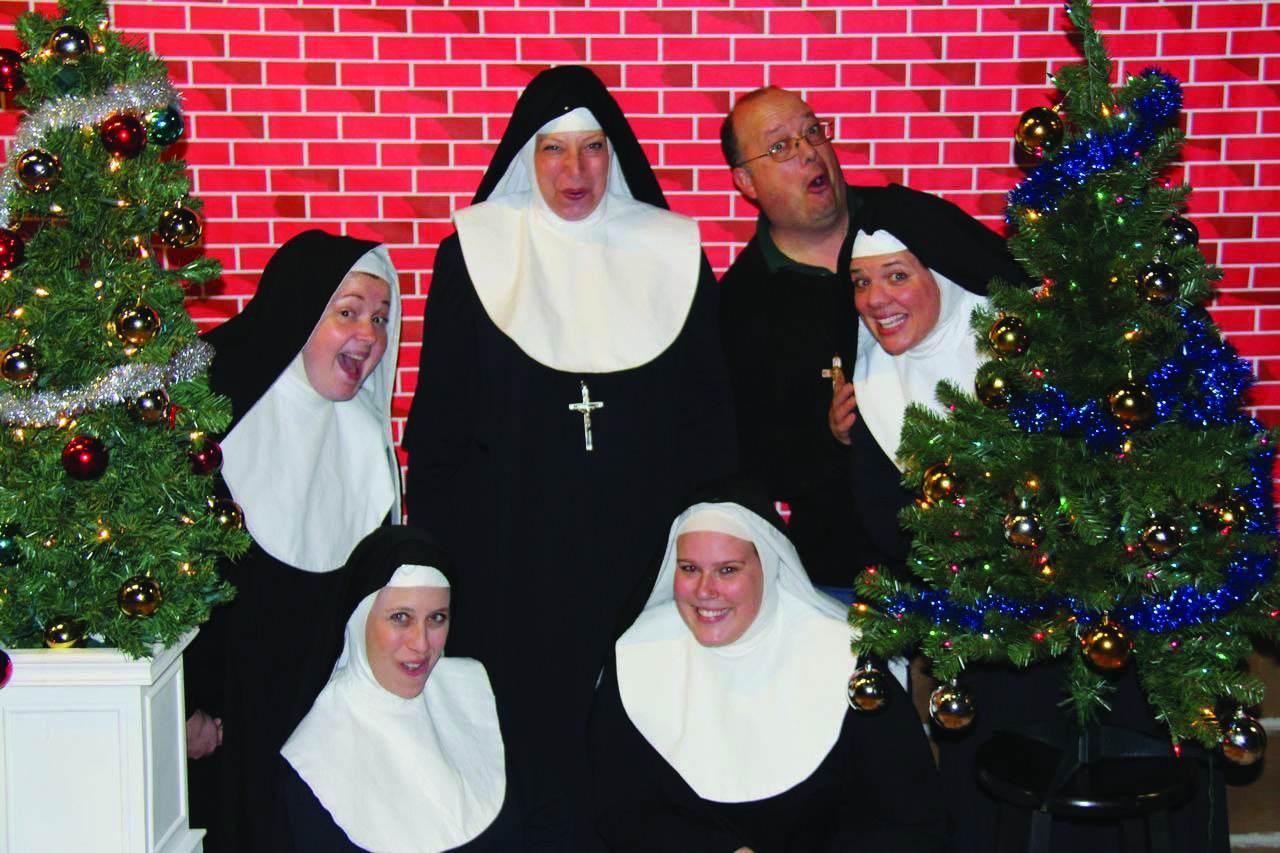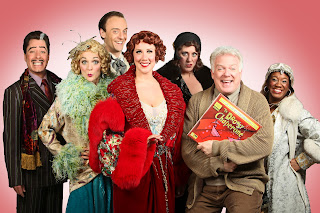For its foray into the world of holiday theater, Forest
Grove’s venerable Theatre in the Grove tackles “Narnia,” based on C.S. Lewis’
much beloved children’s tale “The Lion, The Witch and The Wardrobe.” The
production captures both aspects of children’s theater – it is theater for
children, and the majority of the cast members are young people.
In order to fully appreciate the show, it is essential to
see it through the eyes of a child – happily, we were able to do this because
the audience contained an abundance of young people enthusiastically embracing
the show’s magic. The cast consists of 20 young people (whose ages range from
elementary school through college) and 8 adults. Director Michelle Friend,
faced with the challenge of taking over the show halfway through the production
process, has done a fine job of synthesizing this large and disparate group
into an effective ensemble.
The Leopard (Iris Cebola) sums it all up beautifully in her
cast bio: “…it’s cool how people audition for these plays, and then they do all
the hard work of running a show, and the actors don’t even get paid in anything
but the wonderful experience of acting in live theatre…it means that the actors
don’t care that they aren’t earning profit, they just want to entertain the
community and have fun. That…is truly awesome” – and it is!
While all of the actors, musicians, crew, and house staff
contribute to this “awesome” enterprise, a few merit special mention. Natasha
Kujawa (who, with her mom Carla, choreographed the show) opens the evening with
the first of several ballet numbers. Her graceful movements and delightful
smile set the tone for much of what follows. John Ollis (Professor
Digory/Father Christmas) is charmingly avuncular and conspiratorial in his role
as the children’s uncle.
Breanna Grimes (Edmund Pevensie) has perhaps the greatest
challenge, playing a male role so convincingly that only the program betrays
the secret of her gender. She is deliciously venal, and the incessant
squabbling between Edmund and Lucy (Aubrey Crouch) provides some of the
evening’s most amusing moments, despite the plaintive efforts of older sister
Susan (Lindsay Partain) to mediate. The fight scenes between Peter Pevensie and
various snarling foes are lively and well-executed – two younger boys were
overheard at intermission marveling at the authentic swordplay.
Comic relief rests in the able hands (or, perhaps, paws) of
Mr. and Mrs. Beaver (Tom Robinson and Dusti Arab). Often in the background,
their verbal and physical interactions frequently steal the scenes, and they
provide some of the strongest solo and choral voices in the cast. Pruella
Centers uses her roles as Mrs. McReady and the White Witch to portray
stereotypically angry and nasty (but terribly funny) old women in both the real
and fantasy worlds of the play.
James Grimes is well cast as Aslan, the thematic key
character of the story. Kudos to the makeup and costuming crew for giving him
an other-worldly physical mystique that complements his powerful role in the
bizarre world of Narnia. He delivers his lines crisply and firmly, yet conveys
a compassion that justifies his martyrdom. In addition, he has a powerful and
compelling voice that anchors the choral work of much of the show.
The orchestra, conducted by music director Seung Jin Bae, is
really quite wonderful. The score is
complex, and the musicians never miss a beat. The sets are effective,
especially the wonderful wardrobe door – only when the house lights are full
was it apparent that the seemingly ornate carvings are really just painted on.
Close reading of the program reveals the extent to which
“Narnia” is truly a family affair – not just for the audience children in their
holiday finest, but for the cast, which is generously peppered with parents,
children, and siblings. Theatre in the Grove brings something special and
unique to the Forest Grove community.
“Narnia” is playing at
Theatre in the Grove, 2028 Pacific
Avenue


























